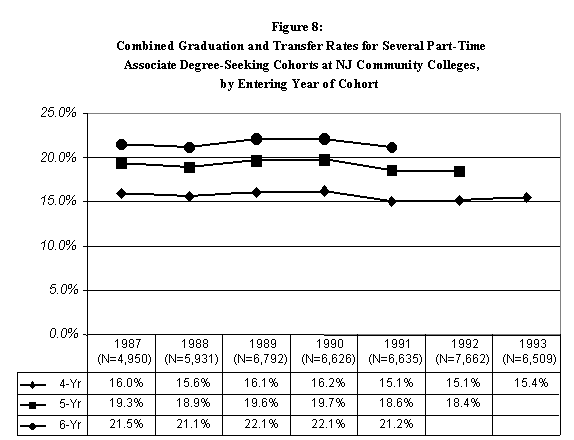Plus Forty Seven Degrees 56 37 Minus Raritan

Slice your bread into 1/2-inch pieces, add water, and mash with your hands until it's smooth and the water is incorporated, 6 or 7 minutes. The bread should have a firm. In a 14-inch frying pan, heat the vegetable oil to 325 degrees F.(Use a Candy thermometer to gauge the correct temperature.) Once the oil is hot, gently.
Focusing on Higher Education Outcomes: The Third Systemwide Accountability Report Focusing on Higher Education Outcomes: The Third Systemwide Accountability Report November 1998 New Jersey Commission on Higher Education Mr. Cade Chairman Vice Chairman Dr. Anne Loyle Dr. Gloria Soto Mr. Freeman Accountability Committee Mr. Codey Chairman Mr.
William King TABLE OF CONTENTS I. New Jersey Colleges and Universities by Sector Characteristics Students Degrees Faculty Retention and Transfer Rates Fiscal Indicators Tuition and Fees Student Assistance Revenues and Costs III. Student Outcomes as One Indicator of Institutional Quality Comparing Several Cohorts Over Time Full-Time Cohorts Part-Time Cohorts Tracking a Single Cohort Over an Extended Period of Time Full-Time Cohorts Part-Time Cohorts Analysis and Implications IV. Public Four-Year Nondoctoral Institutions Public Doctoral Institutions Independent Four-Year Nondoctoral Institutions Independent Doctoral Institutions V. Higher education is a vital public enterprise that responds to a variety of crucial educational, economic, and societal needs. Because of higher education's importance, and the substantial public support it receives, calls for increased accountability are heard throughout the nation.
Among government and educational policy makers, there is a growing insistence upon measures of higher education quality, effectiveness, efficiency, and productivity to guide planning and resource allocation and monitor the return on the taxpayers' significant public investment. Students, parents, businesses, and taxpayers are also looking for more and better information to help them judge the quality of available higher education opportunities. For example, a 1997 survey conducted by the national organization of State Higher Education Executive Officers found that 37 states use some sort of performance indicators. This is more than double the number of states with such measures in place three years earlier. Seven additional states reported plans to implement accountability reporting or performance measures in the near future. Quantitative examinations of the performance of institutions, sectors, and higher education systems serve several important functions: • They provide information to students, parents, and other 'consumers' of higher education; • They inform planning, policy development, and resource allocation at the state level; • They provide information to taxpayers, who contribute a significant share of funding for public higher education; and • They promote institutional goal attainment and support the achievement of institutional excellence. The use of quantitative data does require caution, however, since such data can be misinterpreted and/or misused.
In New Jersey, a heightened focus on accountability is consistent with the national trend and the increased institutional autonomy provided by the. The restructuring law specifically requires New Jersey's public colleges and universities to prepare annual reports that inform the public and state policy makers about the condition and progress of the institutions. In addition, the Commission on Higher Education prepares an annual systemwide accountability report to provide aggregate data and information on the various sectors, including the state's independent institutions, and the system as a whole. A third accountability component will be added in FY 2000, when New Jersey implements the performance funding initiative for public institutions proposed by Governor Christine Todd Whitman. This initiative seeks to align institutional priorities with state priorities as set forth in Looking to the New Millennium: New Jersey's Plan for Higher Education.
In 1996, New Jersey's first systemwide accountability report provided a broad overview of the state's higher education system and reported on performance indicators in various areas, including affordability; retention, transfer, graduation, and time to degree; access and academic success; and return on the public investment in higher education. Last year, the second systemwide report focused on higher education costs, comparing revenue, spending levels, and spending patterns for New Jersey's higher education system and the individual sectors to their national counterparts. This year's systemwide report provides more recent data on some of the key indicators addressed in the Commission's first two accountability reports, including information about enrollment, student and faculty characteristics, degrees awarded, retention and transfer rates, tuition and fees, student assistance, and revenues and costs.
The report also examines some of these performance indicators over time. Given the importance of student outcomes as an indicator of quality, the report also provides an in-depth examination of graduation rates and community college graduation-plus-transfer rates. Ouran Highschool Host Club Ds Game Rom Download. Prins Auto Gas Software. In addition to new data reflecting long-term graduation patterns, the report undertakes a new, experimental analysis of completion rates that adjusts for the effects of certain student characteristics that have a strong influence on outcomes. Section II presents a broad overview of the New Jersey higher education system.